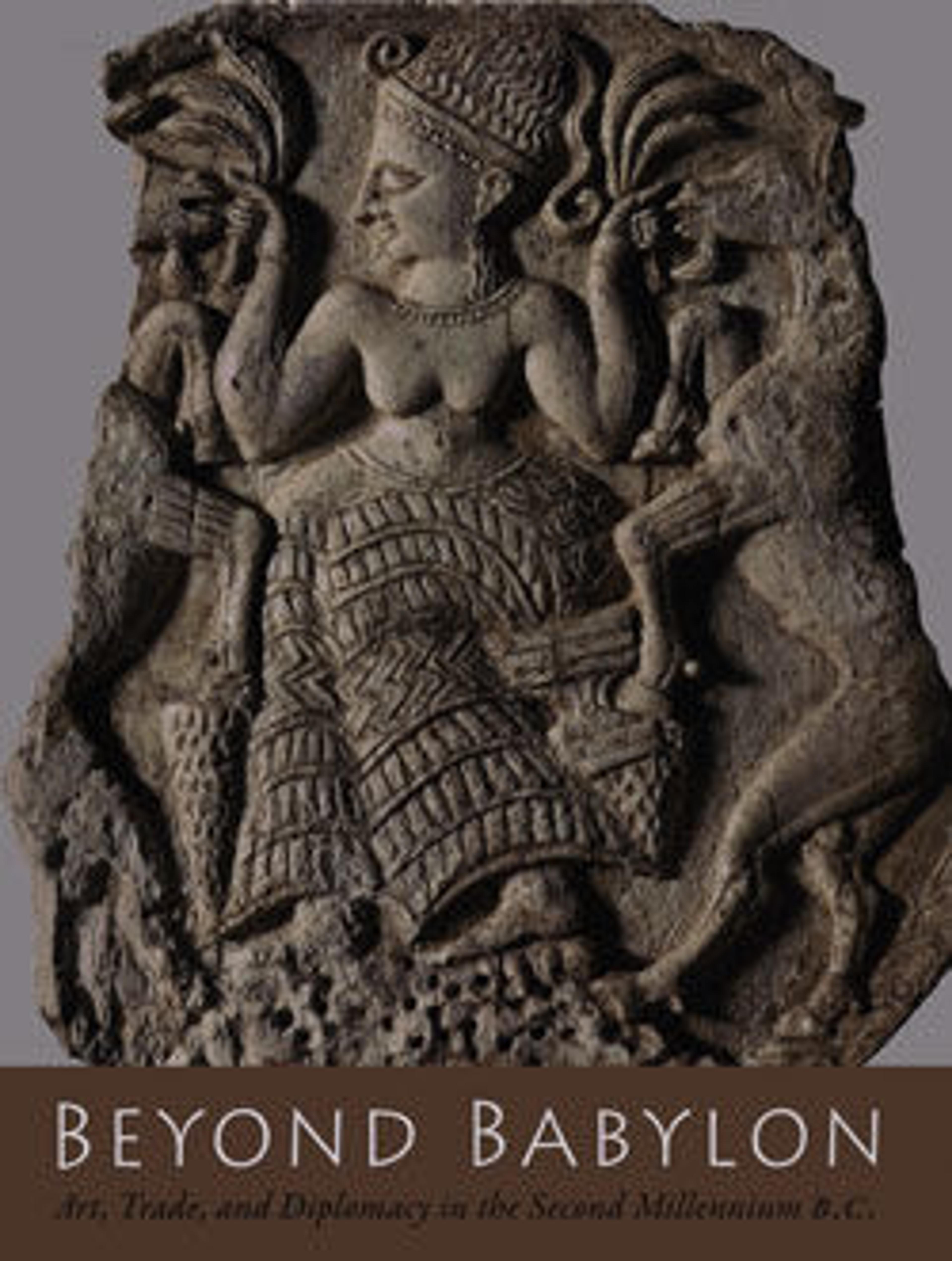Whip Handle in the Shape of a Horse
The horse was a relative latecomer to Egypt. It was introduced in the Second Intermediate period during the Hyksos domination of northern Egypt (ca. 1667–1570 B.C.E.), when new elements of warfare, notably the horse and chariot, were brought from the Near East. During the New Kingdom, this animal became a familiar sight, and there were many depictions of horses in art, particularly during the Amarna period.
This small ivory handle of a light whip or fly whisk is carved in the form of a prancing or running horse stained reddish brown with a black mane. The eyes, one of which has fallen out, were inlaid with garnet. The lively carving of this piece, especially the gracefully arched back, typifies the ability of Egyptian artists to evoke the essential qualities of animals. It also exemplifies the fine quality attained in the decorative arts during the reign of Amenhotep III.
This small ivory handle of a light whip or fly whisk is carved in the form of a prancing or running horse stained reddish brown with a black mane. The eyes, one of which has fallen out, were inlaid with garnet. The lively carving of this piece, especially the gracefully arched back, typifies the ability of Egyptian artists to evoke the essential qualities of animals. It also exemplifies the fine quality attained in the decorative arts during the reign of Amenhotep III.
Artwork Details
- Title: Whip Handle in the Shape of a Horse
- Period: New Kingdom
- Dynasty: Dynasty 18
- Reign: reign of Amenhotep III
- Date: ca. 1390–1352 B.C.
- Geography: From Egypt
- Medium: Ivory, garnet, paint
- Dimensions: L. 14.7 × H. 5.5 × W. 2 cm (5 13/16 × 2 3/16 × 13/16 in.)
- Credit Line: Purchase, Edward S. Harkness Gift, 1926
- Object Number: 26.7.1293
- Curatorial Department: Egyptian Art
More Artwork
Research Resources
The Met provides unparalleled resources for research and welcomes an international community of students and scholars. The Met's Open Access API is where creators and researchers can connect to the The Met collection. Open Access data and public domain images are available for unrestricted commercial and noncommercial use without permission or fee.
To request images under copyright and other restrictions, please use this Image Request form.
Feedback
We continue to research and examine historical and cultural context for objects in The Met collection. If you have comments or questions about this object record, please contact us using the form below. The Museum looks forward to receiving your comments.
